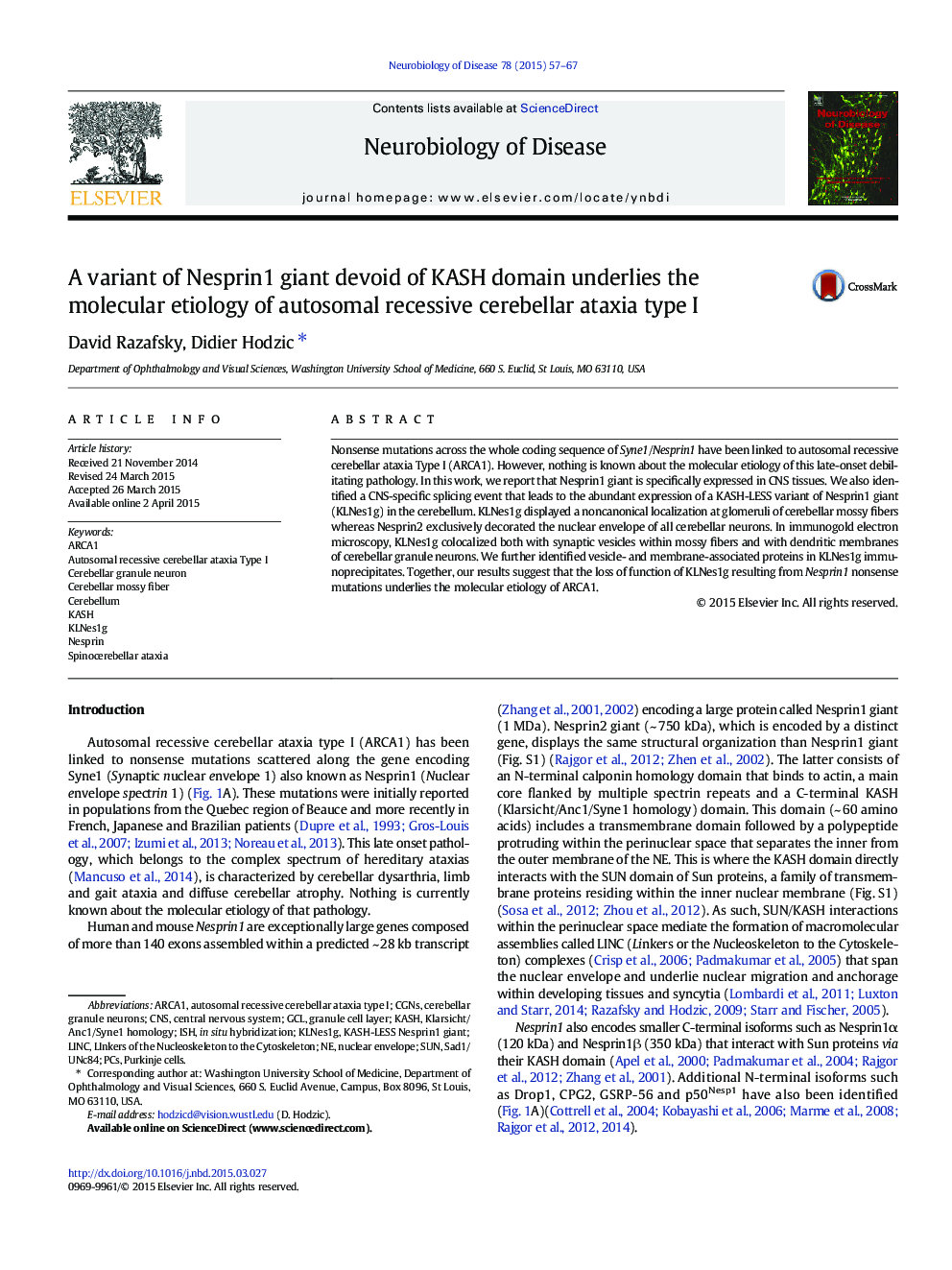| Article ID | Journal | Published Year | Pages | File Type |
|---|---|---|---|---|
| 3069303 | Neurobiology of Disease | 2015 | 11 Pages |
•The giant isoform of Nesprin1 (980 kDa) is specifically expressed in CNS tissues.•A CNS-specific alternative splicing of Nesprin1 generates KLNes1g, a KASH-LESS variant of Nesprin1 giant.•KLNes1g coimmunoprecipitates with proteins whose mutations underlie spinocerebellar ataxia.•ARCA1 mutations may act through abnormal synaptic defects at mossy fibers/CGN interface.
Nonsense mutations across the whole coding sequence of Syne1/Nesprin1 have been linked to autosomal recessive cerebellar ataxia Type I (ARCA1). However, nothing is known about the molecular etiology of this late-onset debilitating pathology. In this work, we report that Nesprin1 giant is specifically expressed in CNS tissues. We also identified a CNS-specific splicing event that leads to the abundant expression of a KASH-LESS variant of Nesprin1 giant (KLNes1g) in the cerebellum. KLNes1g displayed a noncanonical localization at glomeruli of cerebellar mossy fibers whereas Nesprin2 exclusively decorated the nuclear envelope of all cerebellar neurons. In immunogold electron microscopy, KLNes1g colocalized both with synaptic vesicles within mossy fibers and with dendritic membranes of cerebellar granule neurons. We further identified vesicle- and membrane-associated proteins in KLNes1g immunoprecipitates. Together, our results suggest that the loss of function of KLNes1g resulting from Nesprin1 nonsense mutations underlies the molecular etiology of ARCA1.
